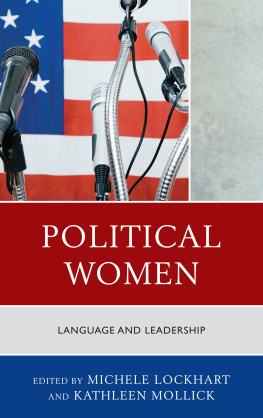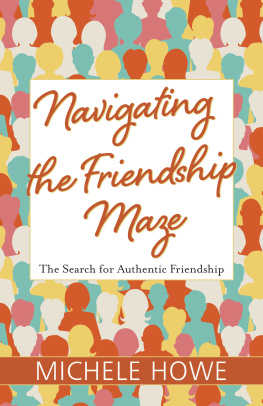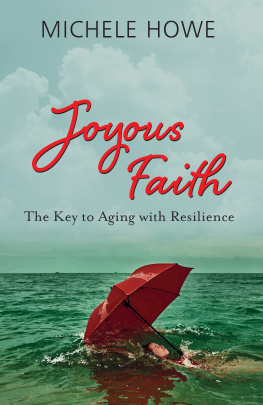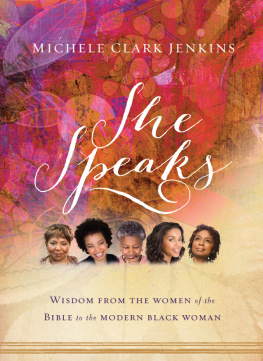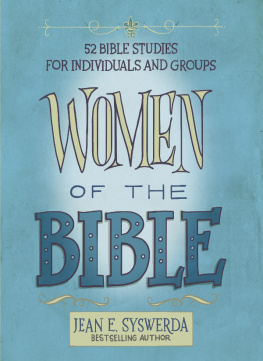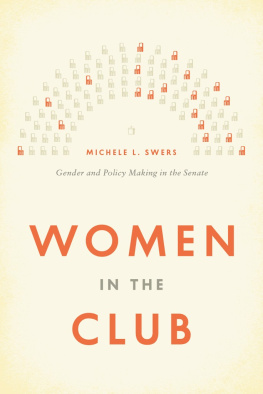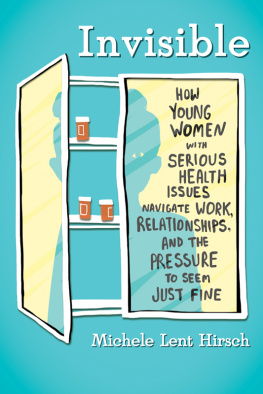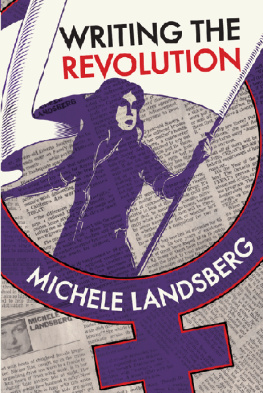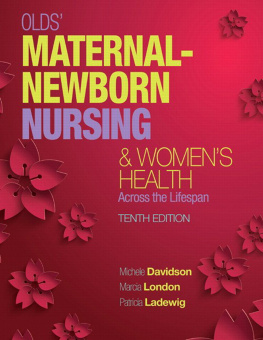Plott Michèle - Making sense of women’s lives : an introduction to women’s studies
Here you can read online Plott Michèle - Making sense of women’s lives : an introduction to women’s studies full text of the book (entire story) in english for free. Download pdf and epub, get meaning, cover and reviews about this ebook. City: San Diego, CA, year: 2000, publisher: Collegiate Press, genre: Romance novel. Description of the work, (preface) as well as reviews are available. Best literature library LitArk.com created for fans of good reading and offers a wide selection of genres:
Romance novel
Science fiction
Adventure
Detective
Science
History
Home and family
Prose
Art
Politics
Computer
Non-fiction
Religion
Business
Children
Humor
Choose a favorite category and find really read worthwhile books. Enjoy immersion in the world of imagination, feel the emotions of the characters or learn something new for yourself, make an fascinating discovery.

- Book:Making sense of women’s lives : an introduction to women’s studies
- Author:
- Publisher:Collegiate Press
- Genre:
- Year:2000
- City:San Diego, CA
- Rating:3 / 5
- Favourites:Add to favourites
- Your mark:
- 60
- 1
- 2
- 3
- 4
- 5
Making sense of women’s lives : an introduction to women’s studies: summary, description and annotation
We offer to read an annotation, description, summary or preface (depends on what the author of the book "Making sense of women’s lives : an introduction to women’s studies" wrote himself). If you haven't found the necessary information about the book — write in the comments, we will try to find it.
Plott Michèle: author's other books
Who wrote Making sense of women’s lives : an introduction to women’s studies? Find out the surname, the name of the author of the book and a list of all author's works by series.
Making sense of women’s lives : an introduction to women’s studies — read online for free the complete book (whole text) full work
Below is the text of the book, divided by pages. System saving the place of the last page read, allows you to conveniently read the book "Making sense of women’s lives : an introduction to women’s studies" online for free, without having to search again every time where you left off. Put a bookmark, and you can go to the page where you finished reading at any time.
Font size:
Interval:
Bookmark:
A COLLEGIATE PRESS BOOK
ROWMAN & LITTLEFIELD PUBLISHERS, INC.
Published in the United States of America
by Rowman & Littlefield Publishers, Inc.
A wholly owned subsidiary of The Rowman & Littlefield Publishing Group, Inc.
4501 Forbes Boulevard, Suite 200, Lanham, Maryland 20706
www.rowmanlittlefield.com
PO Box 317
Oxford
OX2 9RU, UK
Copyright 2000 by Collegiate Press
Cover design: Christopher Davis
Cover art: Marisol, Woman and Dog, 1964. Whitney Museum of American Art, New York, NY.
Photo 1999 Whitney Museum of American Art, New York, NY. Copyright Marisol/Licensed by VAGA, New York, NY.
Photo/Art credits: p. 55: courtesy Harcourt Trade Publishers, photo Barboza; p. 90: courtesy Radcliffe Institute, Harvard University; p. 106: Freda Leinwand; p. 151: Shelley Gazin/CORBIS; p. 195: Hulton-Deutsch Collection/CORBIS; p. 213: Freda Leinwand; p. 227: Roger Ressmeyer/CORBIS; p. 236: Museum of Art, Rhode Island School of Design; p. 237: Sterling and Francine Clark Art Institute; p. 260: Courtesy W. W. Norton & Co., Inc. photo Dagmar Schultz; p. 288: Bettman/CORBIS; p. 356: 1989 Marilyn Humphries/Impact Visuals; p. 441: Freda Leinwand; p. 472: From Two or Three Things I Know for Sure by Dorothy Allison (New York: Dutton/Plume, 1995), 1995 Dutton/Plume, photo by Morgan Gwenwalk; p. 551: The Everett Collection.
All rights reserved. No part of this publication may be reproduced, stored in a retrieval system, or transmitted in any form or by any means, electronic, mechanical, photocopying, recording, or otherwise, without the prior permission of the publisher.
British Library Cataloguing in Publication Information Available
Library of Congress Control Number: 00-131970
ISBN: 0-939693-53-4 (pbk.)
Printed in the United States of America
 The paper used in this publication meets the minimum requirements of American National Standard for Information SciencesPermanence of Paper for Printed Library Materials, ANSI/NISO Z39.48-1992.
The paper used in this publication meets the minimum requirements of American National Standard for Information SciencesPermanence of Paper for Printed Library Materials, ANSI/NISO Z39.48-1992.
Jean Fox OBarr
If the ultimate goal of a liberal arts education is to establish the integral links between learning, knowing, and living, as Duke Universi-tys jean Fox OBarr states, then Womens Studies surely enriches that endeavor. This succinct recounting of Womens Studies intellectual and institutional rise over the past thirty years enumerates the benefits the field has brought to students, to the curriculum, and to intellectual discourse in the widest sense. A Womens Studies perspective,OBarr explains, serves to complicate the questions we ask of the world around us.
I begin with a story about bulletin boards. As we all know, bulletin boards are the stuff of academic life. Students have small ones on their dormitory doors to let friends know of their comings and goings. Faculty members and departments rely on bulletin boards to announce events and information. Administrators use bulletin boards to comply with the requirements of the law and to advertise their activities. Id venture to say that there is hardly an academic building on a U.S. college campus that does not have a bulletin board.
When Duke University built a new student center in the early 1980s, a series of bulletin boards was installed on the main walkway. These fancy bulletin boardswith lights, glass doors, and lockswere offered for sale to campus groups. Although I considered the price outrageous$450in my capacity as director of Womens Studies I immediately sent in the form and enclosed the paperwork for payment. Several weeks later, I received the paperwork back, along with a note from a student union committee saying that my request had been turned down. No reason was given. Knowing how to network, I called a friend on the student union staff to ask what was up. My friend reported that they were having trouble selling the bulletin boards, but a student committee had to approve each request. He advised me to appeal the decision. I contacted the student in charge of the committee and arranged to come to the next meeting.
I took along a senior Womens Studies student known for her keen sense of humor as well as her leadership in student politics. The chair opened the meeting by saying that Dr. OBarr and her student Colleen wanted to discuss the Womens Studies bulletin board request. He reminded the committee that the request had been turned down at the last meeting because the committee had never heard of Womens Studies. Before I could recover enough to say a word, Colleen spoke up: Well, in that case, we are just the program that needs a bulletin boardto educate you as well as visitors to the student union. Silence, shock, and laughter followed in that order. I never did have to give my reasoned arguments. The committee simply agreed that the function of bulletin boards was to convey information about new ventures and we were on our way.
Getting the bulletin board was only the first step. I then had to decide how to use it, what to sayin short, to answer the question What is Womens Studies?
I would like now to talk with you about what I understand the womens studies enterprise to be. This is a necessary prelude to describing the contributions of womens studies to the liberal arts curriculum.
We usually date the offering of the first courses in womens studies from the late 1960s. Researchers now know that there were many courses on women and their social positions in colleges and universities from the early 1900s. Other investigators are documenting the history of womens writing about womens positions across centuries and continents. But that is another subject.
In the late 1960s most of the professional positions in U.S. higher education were, of course, held by men. But beginning in the mid-1960s larger numbers of women were earning Ph.D.s and joining faculties. While women tended to be more interested than their male colleagues in researching questions relating to women, it is important to stress that very few people could answer the questions being asked. The few feminists already in the academy, spurred by their involvement with the nascent womens movement, began to ask new questions of their own data.
I think of myself as typical. I entered graduate school in 1964 as a Woodrow Wilson fellow, bound for college teaching. I completed course work in three years and headed out for fieldwork in northeast Tanzania in the shadow of Mt. Kilimanjaro. My husband, an anthropologist, and I planned to stay for two years and study local communities. I was interested in how the then-new countries of Africa were becoming modern nation-states through setting up democratic political structures. I talked to local leaders. I hired men to help me interview people, and I went to every meeting of every local party and government unit and hung out with the male political leaders at party headquarters. It never once occurred to me to talk to women as women. Nor were there any women in decision-making positions. I never even noticed their absence, much less stopped to consider whether womens absence was important.
At one point in my investigations, I realized that in one of the two villages I was researching, 25 percent of the lowest-level party volunteers were female. Locals explained this by the vacuum theory of fe.male political participationthis was an area of high male labor migration, and women had to fill in when men were absent. But it wasnt normal (read good), they said. I also learned that the women of this same area had led tax riots in the late 1940s that succeeded in pressuring the British colonial government to reverse its policies. But people assured me this wasnt usual either. I wrote up both these bits of information in my dissertation without making anything of them.
Font size:
Interval:
Bookmark:
Similar books «Making sense of women’s lives : an introduction to women’s studies»
Look at similar books to Making sense of women’s lives : an introduction to women’s studies. We have selected literature similar in name and meaning in the hope of providing readers with more options to find new, interesting, not yet read works.
Discussion, reviews of the book Making sense of women’s lives : an introduction to women’s studies and just readers' own opinions. Leave your comments, write what you think about the work, its meaning or the main characters. Specify what exactly you liked and what you didn't like, and why you think so.

